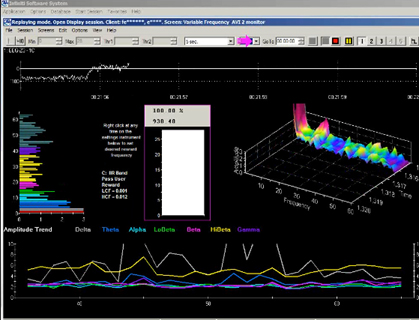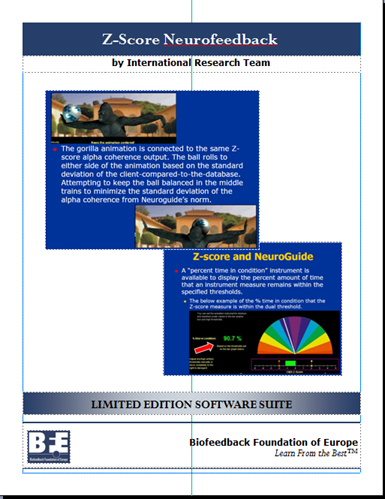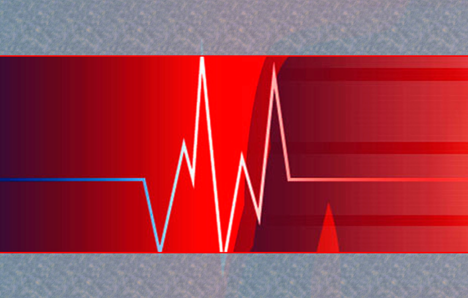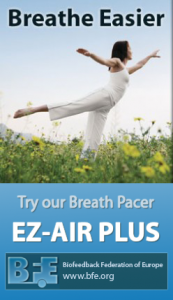SCPs, Z-Scores & Low Freq.
Overview
 Our interactions with clinicians from all across the globe have show us that there really are a multitude of techniques when is comes to normalizing or optimizing brain activity. “Traditional” neurofeedback is gaining ground in the therapeutic world, but neurofeedback is quickly expanding into realms beyond simply up and down training of bandwidths amplitudes. This BFE page showcases the different EEG techniques developed by different clinicians and teams, to maximize efficiency of data collection, minimize required equipment, simplify data interpretation, open new doors to more advanced types of neurofeedback data analysis, or introduce personalized styles of assessment and training.
Our interactions with clinicians from all across the globe have show us that there really are a multitude of techniques when is comes to normalizing or optimizing brain activity. “Traditional” neurofeedback is gaining ground in the therapeutic world, but neurofeedback is quickly expanding into realms beyond simply up and down training of bandwidths amplitudes. This BFE page showcases the different EEG techniques developed by different clinicians and teams, to maximize efficiency of data collection, minimize required equipment, simplify data interpretation, open new doors to more advanced types of neurofeedback data analysis, or introduce personalized styles of assessment and training.
Specialized Neurofeedback Techniques
Low frequency neurofeedback refers to monitoring and training EEG bandwidths in the 0.01 – 2 Hz range, which are too low for the average neurofeedback equipment to reliably measure. Popularized by the Drs. Siegfried and Susan Othmer, this neurofeedback method (also called infra-low frequency training) is based on individuals having optimum reinforcement frequencies in the infra-low range that promote central nervous system stability across different sites of the brain. Reinforcing that frequency, via a bipolar electrode hook-up, evokes a system response that effects a renormalization of timing relationships in the cerebrum, which in turn alleviates client symptoms.
Slow cortical potentials (SCPs) are slow event-related direct-current shifts of the EEG. These shifts in the electrical negative direction reflect the depolarization of large cortical cell assemblies, reducing their excitation threshold. A complete explanation of SCPs is inadequate for a brief paragraph, so we will simplify its descriptions to this: the brain reacts to stimulis by depolarizing (activating) neural networks. Monitoring the brain’s reaction to a presented stimulus shows us the brain’s neural activity as a response to that event. Interestingly, the brain also reacts to the expectation of a stimulus, without actually being presented the stimulus. This activity related to the expectation of an event, over the initial first few seconds of expectation, is the domain of slow cortical potentials. This form of neurofeedback training has shown success with headaches/migraines, epilepsy/seizures and ADHD. Learn more from the post on SCP at the BFE’s blog.
Z-Scores neurofeedback is essentially norms-based neurofeedback. The measured EEG activity from an individual is compared to a normalized database, in real-time. The system outputs the individual’s EEG activity in terms of standard deviations away from the database’s norm. The normative database takes into account sex, age, the electrode site on the head, whether the subject has their eyes open or closed, and the specific statistical output (amplitude, coherence, phase…). The name of the normative database is the NeuroGuide DLL, compiled by Robert Thatcher, PhD. A major benefit of processing of EEG data as Z-Scores neurofeedback is in the interpretation of client data. Vague EEG amplitude readings are suddenly all transformed into standard deviations from the norm.
Education
The BFE offers educational content on these advanced neurofeedback techniques. We invite you to explore the different types of live online or recorded presentations in the BFE shop. Below is a small selection of available content.
Slow Cortical Potentials (SCPs) Online Class: learn about the theoretical and clinical uses of slow cortical potentials (SCPs), while using the BFE’s Slow Cortical Potentials software suite.
Low Frequency Neurofeedback Online Class: Elizabeth Tegan discusses the benefits of low frequency (infra-low frequency) neurofeedback and guides attendees on how to successfully training individuals using the BFE’s Low Frequency Neurofeedback Suite.
Z-Scores Online Class or Z-Scores Online Class Recording: Attendees or recording listeners learn how to assess, interpret and train using Z-Scores, as well as receive general tips from the instructor, Linda Walker, on how to train individuals with neurofeedback.
Software
Each of these specialized EEG techniques necessitates the design and integration of unique hardware (specially designed sensors and electrodes) and software parameters (integration of database measures or sensor processing). The BFE has teamed up with highly trained clinicians and software developers in order to integrate their knowledge into a user-friendly setup for health practitioners that desires to use these techniques in their practice or clinic. Click on the links below to learn more about the software suites that were developed.
Slow Cortical Potentials by Elizabeth Tegan, MS, RN, CS
This advanced software suite, based on extensive research at the University of Tubingen, enables users to measure and train slow cortical potentials. Applicable to ADHD, the training aim of this technique is to regulate cortical excitation thresholds considered to be impaired in children with attention deficit/hyperactivity disorder. Additionally, the applicability of this suite is also for treatment of migraines, epilepsy and seizures. Extensive published documentation comes included with this software.
This suite combines engineering know-how in low frequency signal processing to enable training of low frequencies (0.001 to 3 Hz). Users can also monitor standard EEG bandwiths and physiology data. These screens are a good starting point for practitioners, educators and researchers who wish to integrate low frequency measurements into their practice.
Several BFE software suites integrate Z-Scores for data analysis in assessment or/and training. The below listing of packages use Z-Scores:
ZScores are the real-time comparison of a patient’s EEG readings from up to 4 sensors to the Thatcher normative database (“Neuroguide”). This allows for Z-Score training, which allows users to train according to a standard deviation from the database population. Z-Score training parameters include absolute and relative power, coherence, and phase. The difference between the BFE and Thought Technology Ltd.’s Z-Score suites is that the BFE Suite is more in-depth and flexible: it allows for dozens of simultaneous parameter training options, and also includes many reference documents and helpful training hints.
Integrative Medicine: Setting Up A State-of-the-Art Practice by Dr.Robert E. McCarthy
This suite supports techniques utilized and developed by Dr. McCarthy throughout his 30 years providing assessment, diagnosis, remediation and treatment for individuals with emotional, physical, neurological and developmental problems. Not only does it provide biofeedback and neurofeedback evaluation and training methods, it also includes 60-plus additional documents that come directly from Dr. McCarthy’s clinic. The suite provides a comprehensive resource for clinicians wanting to set up their own state-of-the-art Integrative Medicine practice.
Troubled Youth by Linda Walker, MHR, LPC
In this suite, Ms. Walker has shared her eclectic training style and knowledge of a wide variety of biofeedback and neurofeedback therapeutic methods based on her experience working with troubled youth and their families both in the public and private sectors. Her treatment population has notable problems within the education system, due to ADHD and co-morbidities as well as paths marked with trauma from abuse, loss or family chaos.
Neurofeedback for Tinnitus Suite by Linda Walker, MHR, LPC
The Neurofeedback for Tinnitus software suite is based on the published work of Dr. Dohrmann and her research group at the Universität Konstanz in Germany, as well as on-going research of Eliana Sapaio, PhD. The software is designed to assess and then help to normalize the activity of several bandwidths and ratios, in particular alpha/delta ratio, through feedback. Included with the suite is a collection of literature, samples of tinnitus questionnaires, sample data from a tinnitus client, and research notes. The software allows for review of data using Z-Scores, if the user’s system is capable of Z-Score measurement, however it is not required.





